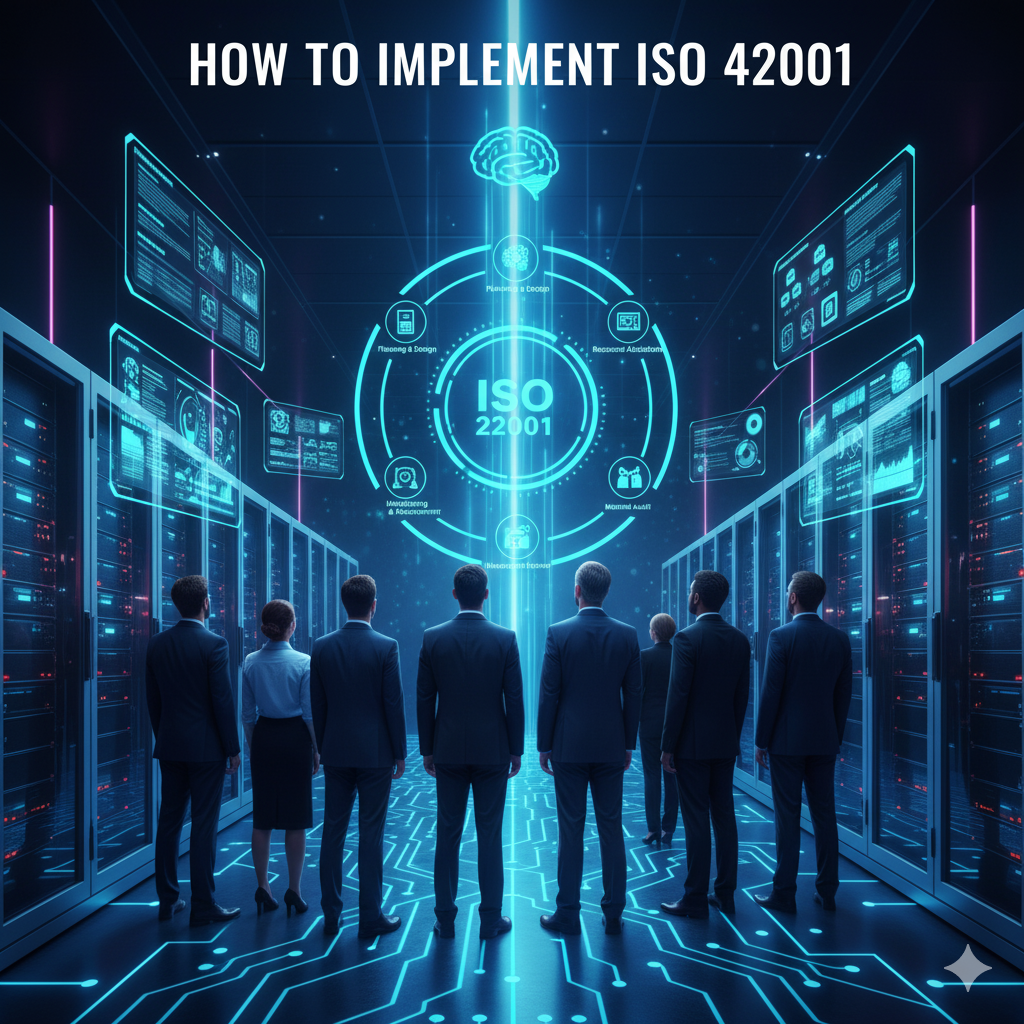AI forecasting models use machine learning algorithms to predict future trends and outcomes by analyzing historical data patterns and relationships.
The traditional approach to forecasting relies on statistical methods that examine past patterns in a single data stream. A retail company might use historical sales data to predict next month’s demand using simple mathematical formulas. AI forecasting transforms this process by processing multiple data sources simultaneously and discovering complex relationships that humans cannot detect.
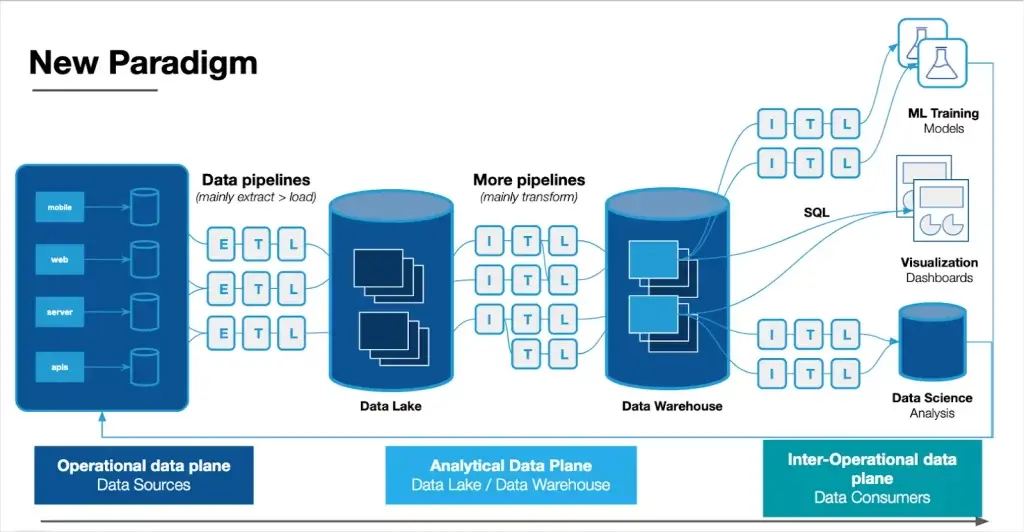
Source: Monte Carlo Data
Modern organizations generate vast amounts of data from customer transactions, sensor readings, social media activity, and market indicators. AI forecasting models absorb these diverse information streams to generate more accurate predictions than traditional methods. Research from IBM indicates that organizations using AI forecasting achieve forecast accuracy improvements of 10 to 50 percent compared to conventional statistical approaches.
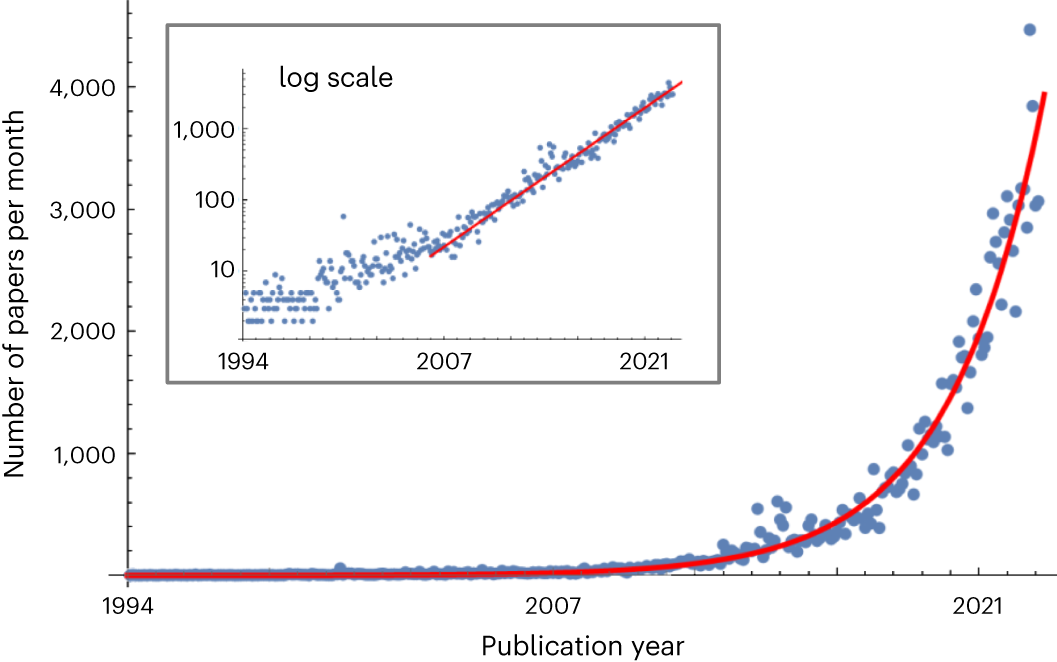
Source: Nature
What Are AI Forecasting Models
AI forecasting models are computer programs that learn from historical data to predict future events. Unlike traditional forecasting that follows fixed mathematical rules, these models adapt and improve their predictions over time.
Think of it like teaching a computer to recognize weather patterns. Traditional forecasting might use a simple rule like “if it rained yesterday, there’s a 30 percent chance of rain today.” An AI forecasting model examines thousands of weather variables — temperature, humidity, wind patterns, seasonal trends — and discovers complex relationships between all these factors.
These models work by feeding historical information into algorithms that process data through multiple computational layers. Each layer extracts different features from the raw data, building increasingly sophisticated understanding of underlying patterns. The models adjust their internal settings through exposure to training examples, getting better at making predictions over time.
AI forecasting models serve the basic purpose of automating prediction processes that would be difficult for humans to perform manually. Where traditional methods might analyze one or two variables, AI models can simultaneously process hundreds of different data points.
How AI Forecasting Differs From Traditional Methods
Traditional forecasting methods and AI approaches represent fundamentally different ways of understanding and predicting future events. Traditional statistical methods follow predetermined mathematical rules, while AI models learn patterns autonomously.
Traditional Statistical Methods:
- Use fixed mathematical formulas like ARIMA or exponential smoothing
- Focus primarily on historical values of the target variable
- Require manual model selection and parameter adjustment
- Work best with stable, seasonal patterns
- Handle limited input variables effectively
AI Forecasting Models:
- Learn patterns automatically from training data
- Process multiple data sources simultaneously
- Adjust parameters automatically through machine learning
- Adapt to changing conditions and volatile environments
- Handle thousands of input variables and complex relationships

Source: Cogent Infotech
Pattern recognition capabilities differ dramatically between approaches. Traditional methods excel at identifying regular seasonal cycles and linear trends but struggle when data contains irregular patterns. AI models use neural networks to detect subtle patterns that exceed human capacity to identify.
Data handling represents another major distinction. Traditional forecasting typically uses one primary time series with perhaps a few additional variables. AI models integrate structured data from databases alongside unstructured information like text documents, images, and sensor streams.
Types of AI Forecasting Models
AI forecasting models fall into several categories, each designed for specific data types and business requirements.

Source: AIML.com
Time Series Forecasting Models
Time series models analyze sequential data points collected over regular intervals. ARIMA models combine three components to handle different aspects of time series data — past values, trends, and random fluctuations. These models work well for data with clear patterns but require stable conditions to function properly.
Exponential smoothing models assign decreasing importance to older observations, giving more weight to recent data points. Simple exponential smoothing handles data without trends, while more complex versions account for seasonal patterns and long-term trends.
Machine Learning Regression Models
Machine learning regression treats forecasting as a supervised learning problem, using historical data as input features to predict target values. Linear regression establishes relationships between predictor variables and outcomes using mathematical equations. Random forest models combine multiple decision trees to create robust predictions that resist overfitting.
Support vector machines create boundaries between different data regions to make predictions. These models handle high-dimensional data effectively but require careful parameter adjustment.
Deep Learning Neural Networks
Deep learning networks process data through multiple layers of interconnected nodes, automatically extracting complex patterns from input data. Long Short-Term Memory networks address the challenge of learning from long sequences by incorporating memory cells that selectively retain or forget information.
Transformer models use attention mechanisms to process entire sequences simultaneously rather than step-by-step. These models can focus on relevant historical periods when generating forecasts and process data faster than traditional neural networks.
Ensemble Methods
Ensemble approaches combine predictions from multiple models to achieve better accuracy than any single model. Simple averaging assigns equal weight to each model’s prediction, while weighted averaging emphasizes models with superior historical performance.
Key Benefits of AI Forecasting for Business
AI forecasting models deliver concrete advantages that transform how organizations predict future trends and make strategic decisions.
Superior Accuracy — AI models reduce forecast errors by 10 to 50 percent compared to traditional statistical methods. Machine learning algorithms automatically discover complex patterns in data that conventional methods often miss.
Automated Data Processing — AI systems automatically clean, organize, and analyze vast amounts of information from multiple sources. Organizations report reducing forecasting time from 80+ hours to under 15 hours through automation.
Real-Time Adaptation — AI models continuously learn from new data and adjust predictions as conditions change. This dynamic capability allows businesses to respond quickly to market shifts without manually reconfiguring forecasting systems.
Massive Scale Handling — AI forecasting systems simultaneously generate predictions for thousands of products, locations, or customers. Traditional methods struggle with this volume, but AI models process multiple forecasting tasks in parallel.
Real-World Applications Across Industries
AI forecasting transforms operations across diverse industries through practical applications that deliver measurable improvements.
Retail and E-commerce
Major retailers like Walmart implement AI-powered demand sensing systems that analyze weather data, local events, and customer purchasing trends. These systems reduce forecast errors by 20 to 50 percent compared to traditional methods, enabling inventory reductions while maintaining higher service levels.

Source: Crisp Knowledge Base
AI models for retail incorporate diverse data sources including historical sales records, promotional calendars, competitor pricing, and social media sentiment. The systems generate location-specific and product-specific forecasts across hundreds of stores and thousands of products.
Manufacturing and Supply Chain
Manufacturing companies apply AI forecasting to production planning and equipment maintenance. Predictive maintenance systems analyze sensor data from manufacturing equipment to forecast component failures before they occur, reducing maintenance costs by 5 to 10 percent and increasing equipment uptime by 10 to 20 percent.
Healthcare Resource Allocation
Healthcare systems use AI forecasting to predict patient volumes and optimize staffing levels. Hospitals analyze historical admission data, seasonal patterns, and local health trends to forecast demand for emergency services and specialized treatments.
Wearable medical devices equipped with AI forecasting monitor physiological signals in real time, predicting potential health crises before they occur and enabling proactive interventions.
Financial Services
Financial institutions deploy AI forecasting for algorithmic trading and fraud detection. Trading systems analyze market data and sentiment indicators to forecast short-term price movements. Fraud detection systems monitor transaction streams continuously, using AI to identify patterns that indicate fraudulent activity.
How to Choose the Right AI Forecasting Model
Selecting the appropriate AI forecasting model requires evaluating your data characteristics, business requirements, and technical constraints.
Data Assessment — The nature of your data determines which models work effectively. Large datasets with thousands of observations support complex neural networks, while smaller datasets work better with simpler machine learning models. Clean, consistent data enables sophisticated approaches, while noisy data may require more robust methods.
Business Requirements — Accuracy needs vary significantly across applications. Critical decisions demand high-precision models like ensemble methods, while exploratory analysis can use simpler approaches. Real-time applications need fast inference models, while batch forecasting allows more complex computations.
Technical Constraints — Infrastructure and operational realities constrain model choices. Cloud resources enable complex neural networks, while limited infrastructure suggests simpler models. Organizations often benefit from starting with simpler models to establish baselines, then advancing to more complex approaches as capabilities mature.
Implementation Requirements and Best Practices
Successful AI forecasting implementation requires several foundational elements spanning data, technology, and organizational capabilities.
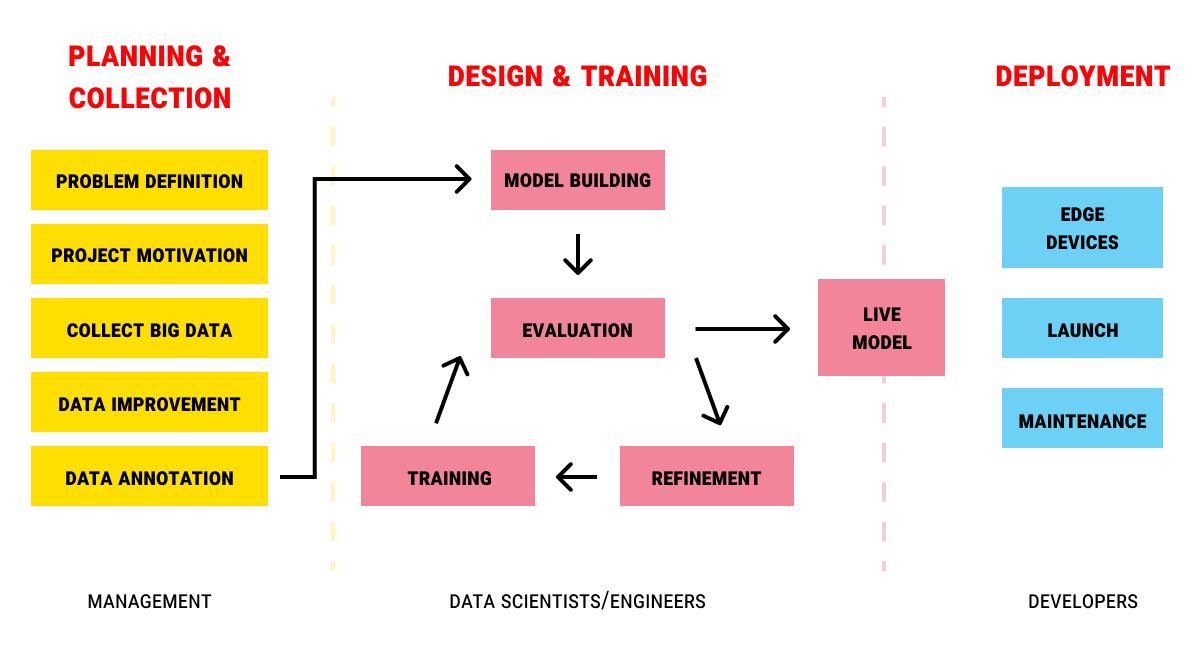
Source: Label Your Data
Data Quality Foundation
AI forecasting models require clean, consistent data from multiple sources. Poor data quality significantly reduces model accuracy and can lead to unreliable predictions. Complete datasets contain minimal missing values, while consistent data follows uniform formats and time intervals across all sources.
Data integration connects information from structured sources like databases and unstructured sources including sensor streams and social media content. Organizations establish data governance processes that define ownership, access controls, and quality standards.
Technical Infrastructure
AI forecasting systems require computational resources for model training and real-time inference. Cloud platforms provide scalable infrastructure that accommodates varying computational demands, while on-premises solutions offer greater control over sensitive data.
Development environments provide tools for data scientists and engineers, combining data access, model development, and deployment capabilities. Container technologies enable consistent deployment across different computing environments.
Team Capabilities
AI forecasting implementations require diverse skills across data science, engineering, and business domains. Data scientists design and implement forecasting models, while data engineers build infrastructure for data processing and model deployment. Business analysts translate forecasting outputs into actionable insights.
Training programs develop capabilities across different roles, covering technical concepts, business applications, and collaboration methods. Ongoing education keeps teams current with evolving technologies and methods. Consider conducting an AI maturity assessment to evaluate your organization’s readiness for AI implementation.
Measuring Performance and ROI
Evaluating AI forecasting models requires examining both accuracy metrics and business impact measurements.

Source: ResearchGate
Accuracy Metrics — Mean Absolute Error calculates the average difference between predicted and actual values, expressing results in the same units as the original data. Root Mean Squared Error penalizes large errors more heavily by squaring differences before averaging. Mean Absolute Percentage Error expresses errors as percentages, allowing comparison across different scales.
Business Impact Metrics — Inventory reduction measures how forecast improvements enable companies to carry less stock while maintaining service levels. Cost savings track reduced waste from overproduction and improved resource allocation. Service level improvements measure enhanced customer satisfaction through reduced stockouts.
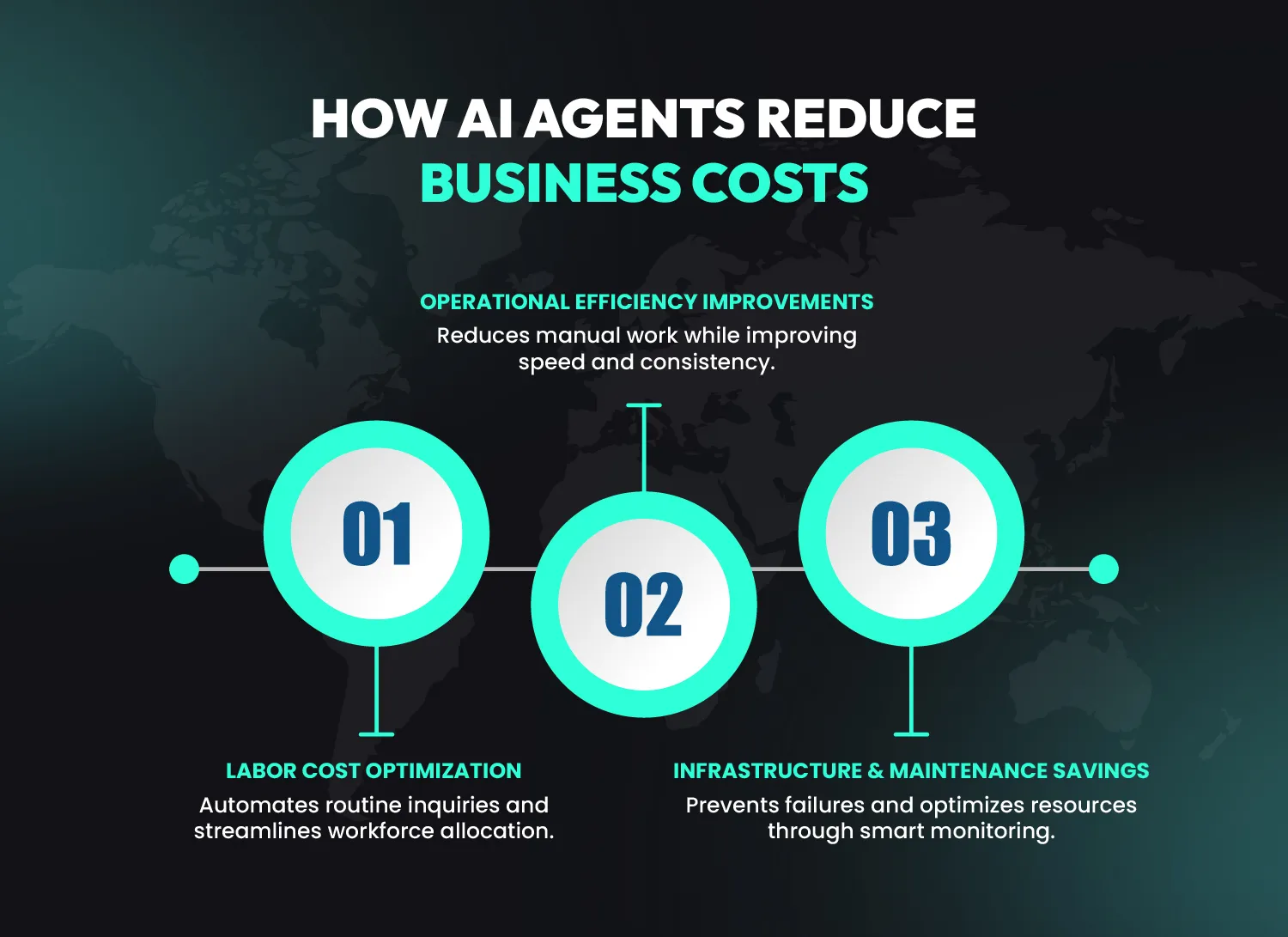
Source: Kodexo Labs
ROI Calculation — Implementation costs include software, infrastructure, development, and training expenses. Operational benefits encompass reduced labor costs, improved decision accuracy, and decreased inventory carrying costs. Organizations typically see positive ROI within 12 to 18 months of implementation.
Challenges and Common Pitfalls
Organizations implementing AI forecasting face several common challenges that can impact success.
Data Quality Issues — Inconsistent, incomplete, or inaccurate data significantly reduces model performance. Missing values, measurement errors, and format inconsistencies require careful attention during data preparation phases.
Model Drift — AI models can lose accuracy over time as business conditions change. Automated monitoring systems track performance metrics and alert teams when accuracy drops below acceptable thresholds.
Integration Complexity — Connecting AI forecasting systems with existing business processes requires careful planning. Data flows between systems, forecast output formats, and user training all affect implementation success.
Overconfidence in Predictions — AI models provide estimates with inherent uncertainty. Organizations sometimes treat forecasts as definitive predictions rather than probability-based estimates, leading to poor decision-making.
The Future of AI Forecasting
AI forecasting continues evolving rapidly as new architectures and methodologies emerge. Foundation models trained on massive datasets promise zero-shot forecasting capabilities for new scenarios without requiring task-specific training data.
Hybrid systems that combine AI models with physics-based simulations offer enhanced accuracy for complex domains like weather prediction. These approaches merge mechanistic understanding with pattern recognition capabilities.
The integration of causal inference with AI forecasting addresses limitations of current systems that excel at identifying correlations but struggle with intervention evaluation. Causal AI forecasting could enable systems that predict likely futures and evaluate the impact of different strategic decisions.
Frequently Asked Questions
How long does it take to implement an AI forecasting system?
Implementation timelines vary based on data complexity and business requirements, typically ranging from 4-8 weeks for simple projects to 3-6 months for enterprise-wide deployments. Data preparation consumes 60-80 percent of project time, as teams clean datasets and create features from raw information.
What amount of historical data do AI forecasting models require?
Modern AI techniques can work with limited datasets through transfer learning, though more historical data generally improves accuracy. Foundation models offer zero-shot forecasting capabilities for new time series without task-specific training. Traditional models typically require 2-3 years of historical data for seasonal patterns, while AI approaches can work with months of data when combined with external signals.
How do AI forecasting models handle sudden market disruptions?
Advanced models incorporate anomaly detection and can adapt to new patterns through online learning algorithms. However, unprecedented events like the COVID-19 pandemic can break fundamental relationships that models learned from historical data. Organizations address this through ensemble methods, regular retraining schedules, and human oversight for intervention when predictions appear unreasonable.
What technical expertise is required to manage AI forecasting models?
Custom development requires data scientists with machine learning expertise and programming skills. However, AutoML platforms enable business users to create forecasts with minimal technical background through point-and-click interfaces. Organizations typically adopt hybrid approaches where data scientists establish frameworks while business users operate approved models through automated platforms.
How do you maintain prediction accuracy over time?
Regular model validation, performance monitoring, and periodic retraining with fresh data maintain accuracy as conditions evolve. Automated monitoring systems track prediction errors and operational measures, triggering alerts when performance drops below thresholds. A/B testing compares new model versions against existing ones before full deployment.

